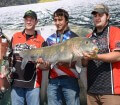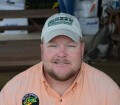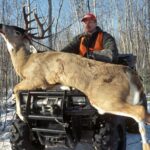John’s Note: Chuck Belmore, the winner of the 2011 World Bowfishing Championship, is another bowfisherman who’s turned his love of bowfishing into his job. He’s the host of The Habit TV on the Sportsman Channel on Sunday nights and Mondays at 4:00 pm.
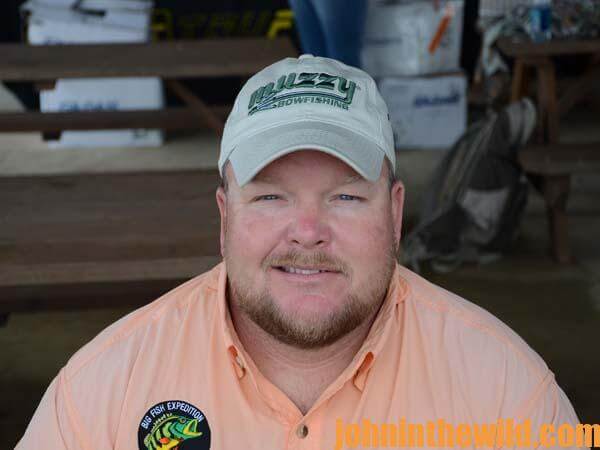 Two ingredients that are absolutely necessary to become a tournament bowfisherman are patience and persistence. You also need to scout the lakes where you’ll compete before the night of the tournament. When I’m scouting, I get to the lake where the tournament’s being held, go out at night and start looking for shallow-water flats and the fish there. Bowfishing is much like bass fishing in that these rough fish also set-up patterns of being at certain places at specific times. Although carp, buffalo and gar are throughout a lake at particular times of the year, many of these fish will be feeding and bedding in specific sections of the lake. For instance during the 2015 Muzzy Bowfishing Classic on Lake Guntersville, most contestants were looking where spawning fish would have fresh water coming into the lake. Some of the bowfishers were searching grass beds where gar usually would hold and forage for food – particularly where current was being pulled through the grass beds. Once the current started running through the lake, all the rough fish would gang-up in certain portions of the lake for great nights of bowfishing.
Two ingredients that are absolutely necessary to become a tournament bowfisherman are patience and persistence. You also need to scout the lakes where you’ll compete before the night of the tournament. When I’m scouting, I get to the lake where the tournament’s being held, go out at night and start looking for shallow-water flats and the fish there. Bowfishing is much like bass fishing in that these rough fish also set-up patterns of being at certain places at specific times. Although carp, buffalo and gar are throughout a lake at particular times of the year, many of these fish will be feeding and bedding in specific sections of the lake. For instance during the 2015 Muzzy Bowfishing Classic on Lake Guntersville, most contestants were looking where spawning fish would have fresh water coming into the lake. Some of the bowfishers were searching grass beds where gar usually would hold and forage for food – particularly where current was being pulled through the grass beds. Once the current started running through the lake, all the rough fish would gang-up in certain portions of the lake for great nights of bowfishing.
 When we won the World Championship, we weighed-in 20 fish that weighed over 800 pounds. We had quite a few big catfish, because the tournament was held in Louisiana. Bowfishers in Louisiana are allowed to take table fare using their bows and arrows, and we also had five big alligator gar with the biggest weighing 135 pounds. To land a fish of that size, you have to have the drag on your reel set, so the fish won’t break the stout line. We used the Muzzy 200-pound test line.
When we won the World Championship, we weighed-in 20 fish that weighed over 800 pounds. We had quite a few big catfish, because the tournament was held in Louisiana. Bowfishers in Louisiana are allowed to take table fare using their bows and arrows, and we also had five big alligator gar with the biggest weighing 135 pounds. To land a fish of that size, you have to have the drag on your reel set, so the fish won’t break the stout line. We used the Muzzy 200-pound test line.
Another major requirement to put together a winning bowfishing team is what I call team building. When you shoot a big fish like the gar I mentioned, one arrow won’t put that fish down. You have to have teammates with bows in hand and fingers on their strings who can shoot quickly to get a second or a third arrow into the fish. When someone shoots a really-big fish, and the team is working together, I call that process, “controlled chaos.” What’s really funny is one minute your team will be hollering and screaming at each other, and the next minute they’ll be hugging – once the fish comes into the boat. Now when you’re shooting big gar like those in Louisiana, they have a lot of teeth, and they’re sharp! We generally gaff the gar and get it alongside the boat, or we’ll use a noose on the gar’s head to get it into the boat. On Lake Guntersville in Alabama, the gar bowfishermen take spotted gar or longnose gar, and many of those gar they can pick up with their arrows and put them in the boat.
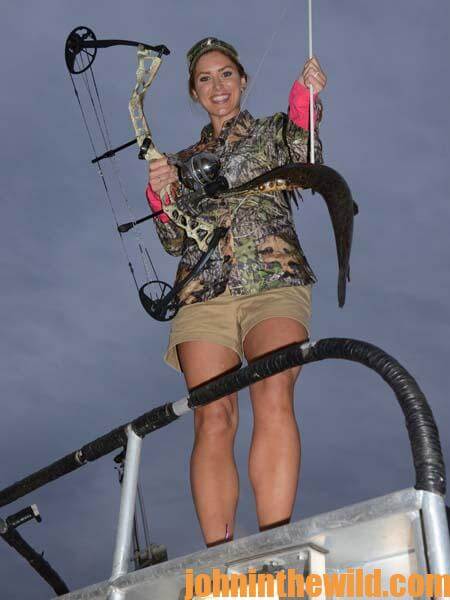 To learn more about bowfishing, go to our series of videos called, “Bowfishing 101.”
To learn more about bowfishing, go to our series of videos called, “Bowfishing 101.”
To get John’s latest cookbooks, “The Crappie Catcher’s Cookbook” and “The Catfish Catcher’s Cookbook” for free, click here. To see all of John’s available print and eBooks, click here.

